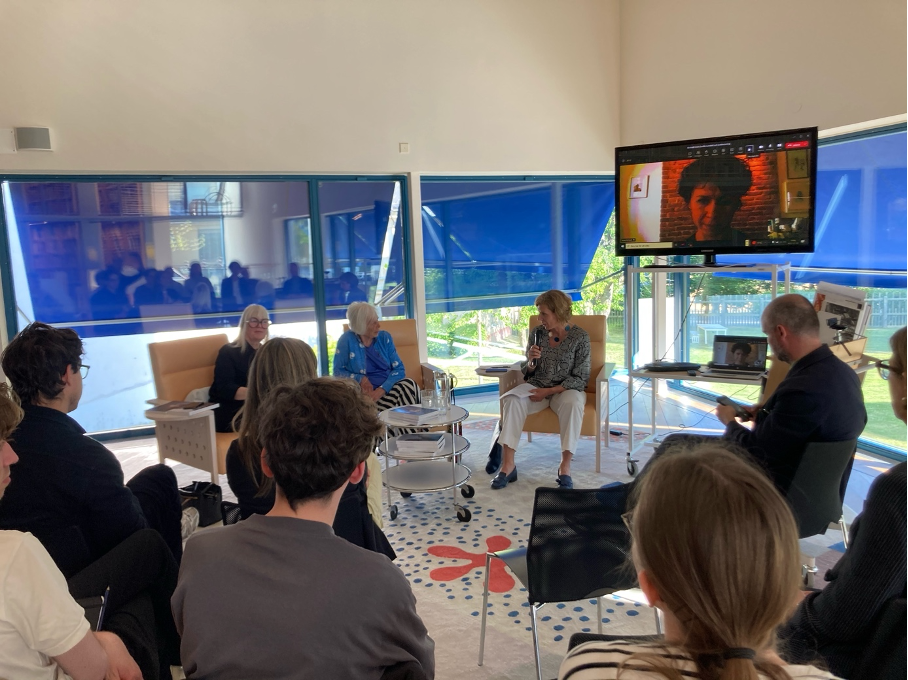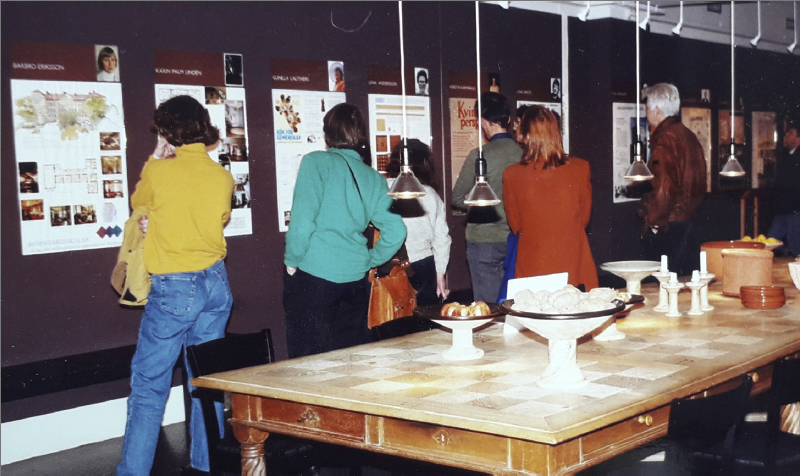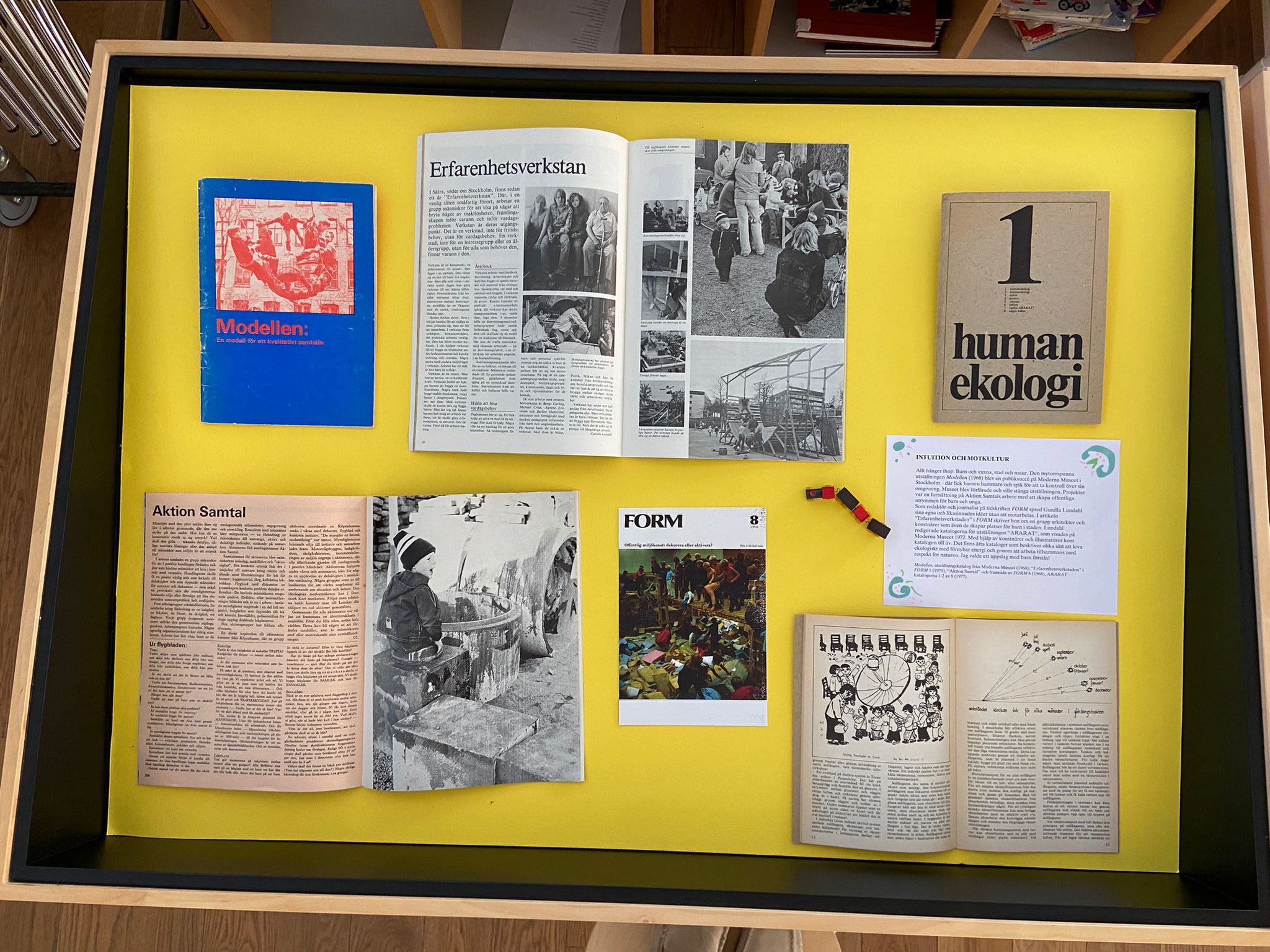Curating beyond, or against the stream


Maria Lind introduces the book Curating beyond the mainstream (Konstfack/Sternberg Press, 2022) as one of two ‘Covid-babies.’ Initiated by Curatorlab—a one-year international curatorial course for professional curators at Konstfack University of Arts, Stockholm—during the pandemic, the book focuses on four living pioneers of a young profession. Carlos Capelán, Elisabeth Haglund, Gunilla Lundahl, and Jan-Erik Lundström are portrayed as people who in various ways have “paved the way,” it credits their labor and by extension, it is a way of avoiding to reinvent the wheel. Given the art world’s short memory span, it is important to be reminded of work that has already been done, both experiments that have succeeded and the ones that failed. As such, the four individuals portrayed in the book represent long careers that in many ways address topics that are current today such as inclusivity, postcolonial heritage, and collaborative, and socially engaged practices. However, the focus of this collective research process has not been on their life stories, or “milestone” texts and exhibitions, but rather the kind of practices that they represent and questions that they have pursued. The result is a surprisingly accessible collection of primary research in text and image based on oral, to a large extent Zoom-conversational, history. Released this spring at “chapters” focused events with the four protagonists at various sites in Sweden, I was fortunate to hear Gunilla Lundahl, Lind, representing CuratorLab, and Anna Mikaela Ekstrand, one of the book’s co-writers, in a conversation moderated by Frida Rosenberg, curator at ArkDes, Sweden’s architecture museum, at their library in Stockholm.

“The first time I heard the term ‘curator’ I was very skeptical,” Gunilla Lundberg says responding to Rosenberg’s opening question, “I thought to myself – are they going to put artists in cages now?” Lundahl is a responsive, nuanced, curious, and engaged speaker with a long track record and a multi-faceted practice as both a writer and exhibition maker. If there is a red thread in her work, it might be her social pathos and the drive to imagine a richer life and possible future. She is still active and tells me that she is currently researching playgrounds and how they have decreased in numbers despite an uptick in population. Over the past five decades, she has curated exhibitions in trains, on fields, in prestigious museums, and worked with politics as an activist while publishing extensively. She has often acted as an enabler for those who, as Lundahl laconically phrased it, often are regarded as “semi-citizens,” such as women, children, and the elderly. While dealing with serious topics like city planning, ecology, and social justice, she states that having, and above all, creating space for fun is central: “especially when there is little support and money.”
Moving between writing and making exhibitions throughout her life, she lets these two modes of expression inform and supplement each other—stating that rooms speak to the entire body and texts should be legible, as they are a way to set a tone or give flavor. Sometimes, she adds, it is about very “simple things like line arrangement. What is interesting to focus on in a text will always vary.”

Lundahl values communication but does not shy away from potential conflict. She radiates a strong sense of engagement and was early on part of the urban action group Aktion Samtal, intended to empower and give a sense of agency to citizens, especially younger ones. For her, staging the radical exhibition Modellen: En model för ett kvalitativt samhälle (The Model: A Model for a Qualitative Society) together with the Danish architect Palle Nielsen, where visitors could dress up, paint, build, play and jump into a pool of rubber foam; and later the transdisciplinary ecological experiment ARARAT (Alternative Research in Architecture, Resources, Art and Technology) at Moderna Museet, was mainly a matter of reach. The participatory scope of ARARAT included screenings, discussions with experts and politicians, workshops experimenting with wind power, composting, solar energy, natural methane gas production, besides producing an eight-part publication. About Modellen ”it was not interesting to ask whether it was art or not,” Lundahl said, “rather, it was a question of how much creativity a museum is capable of hosting.” She states that Moderna Museet was a fun institution at the time, but art was somehow always placed on a pedestal. “We wanted to ask what art is and who the creatives can be … and working with children is always interesting as they tend to be seen as a nuisance.”

In 1968 Modellen drew over 35 000 visitors, which at the time, was an exorbitant number for the Stockholm-based museum. ARARAT which took place in 1976, the year after the contested decision to build nuclear power plants in Sweden, also left a major impact. The museum hosted seminars and programs, publications on recycled paper, and later even restaged ARARAT the Nordic Pavilion Venice. Yet, neither of these two exhibitions was fully included in the museum’s archive, and it was not, as Julius Lehmann points out in his article, until the 50-year jubilee book of the museum in 2008 that it really found its way into the institution’s official history. Writing this, Lundahl is still not mentioned by name in the overview presentation on the museum’s website.



“The research started with filling the gaps in Moderna museet’s archive,” Ekstrand said. By creating an alternative, or supplementary archive that is housed at CuratorLab. “Lundahl’s name had fallen out of the social practice discourse, but as her work remains instrumental for the progression of the field we are writing it in.” Earlier this year, the collective research group Bo i Gemenskap (BiG) (Living i Community) of which Lundahl is a founding member donated their archive to ArkDes Library. As a call for more research, Ekstrand has selected primary material from ArkDes archives and with the artistic direction of the artist Sanna Fried the material is currently on view in the library in an exhibit titled “Gunilla Lundahl: Social Justice, Freedom, and Beauty.”
Today, Lundahl argues, it is the smaller institutions, primarily in the suburbs (and I would add in smaller towns or rural areas) that are working to become resources for local groups and interests that can support what artists do and shape what art is. I leave the talk prematurely to participate in a panel in one of those smaller institutions, FFAR, with, among others, Extinction Rebellion, about art and activism. I find myself opening by quoting Lundahl on the importance of making room for creative chaos. The artist Benedictio Carling who participated in ARARAT is in the audience. Among other things, he brought elephant dung from the zoo at the open-air museum Skansen to the ground of Moderna Museet to create methane gas. While speaking of the composting processes and windmills as a forum for an active future he explains that ARARAT was not an exhibition but an assembly. Its final form took shape based on collective action.
Considering the backlash of documenta fifteen, the challenge Lundahl articulates is more pertinent than ever—to “trust in others and in chaos as a positive force. To invite without knowing what will happen and allow for what Lundahl calls a “let’s see what everyone comes up with” approach.
Curating beyond the mainstream is available for free download and in hard copy from Sternberg Press or at your local art book store.
You Might Also Like
Related Tactics—a Bay-Area Collective—Announced as 2023 Rainin Fellow and Awarded $100K
First New York Museum Strikers in Over 20 Years Picket Philippe De Montebello
What's Your Reaction?
Jonatan Habib Engqvist is a curator, author, and occasional teacher. He is co-editor of the Swedish journal Ord&Bild, curator of experimental projects and over 50 exhibitions on 4 continents including international biennales and festivals Art D-0 ARK Underground, VR Pavilion at 58th Venice Biennale, Cycle Music & Art Festival Berlin/Reykjavík, Survival Kit Riga, Sinopale in Turkey, Momentum biennale in Moss, Norway, and Reykjavík Arts Festival. He was Founding director of Curatorial Residency in Stockholm, previously manager of visual art at Iaspis, curator at Moderna Museet and employed at Royal Institute of Art, Stockholm. His writing has been published in several languages in books, journals, and catalogues around the world. Portrait: Dylan Ställborn

